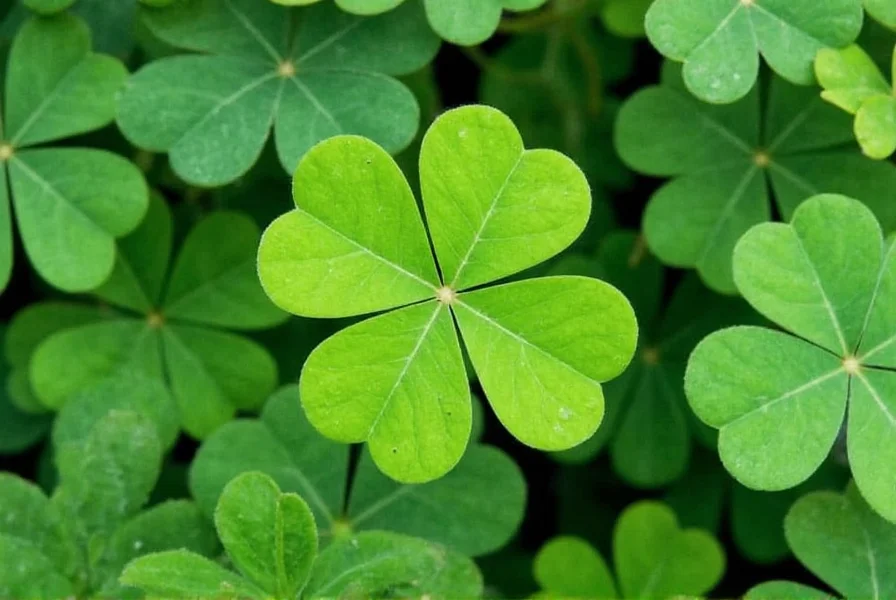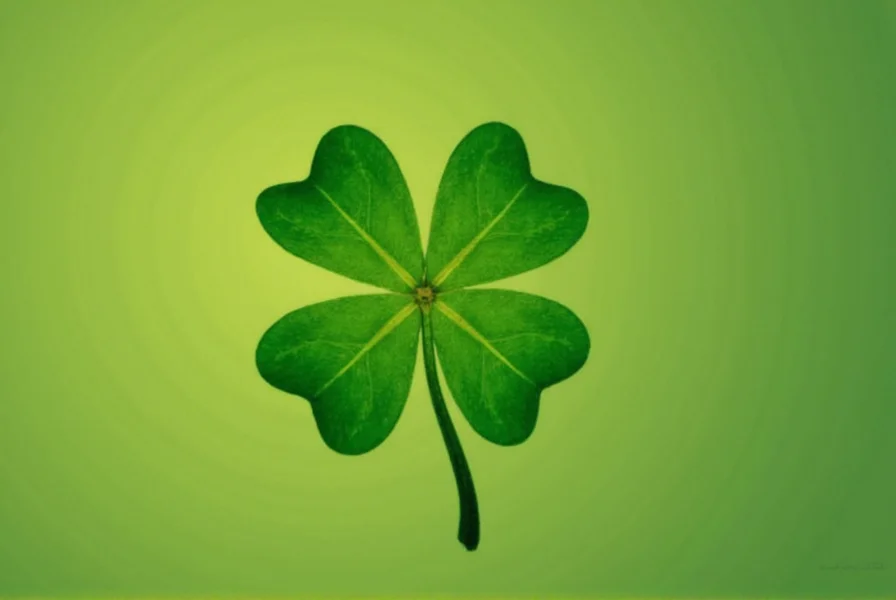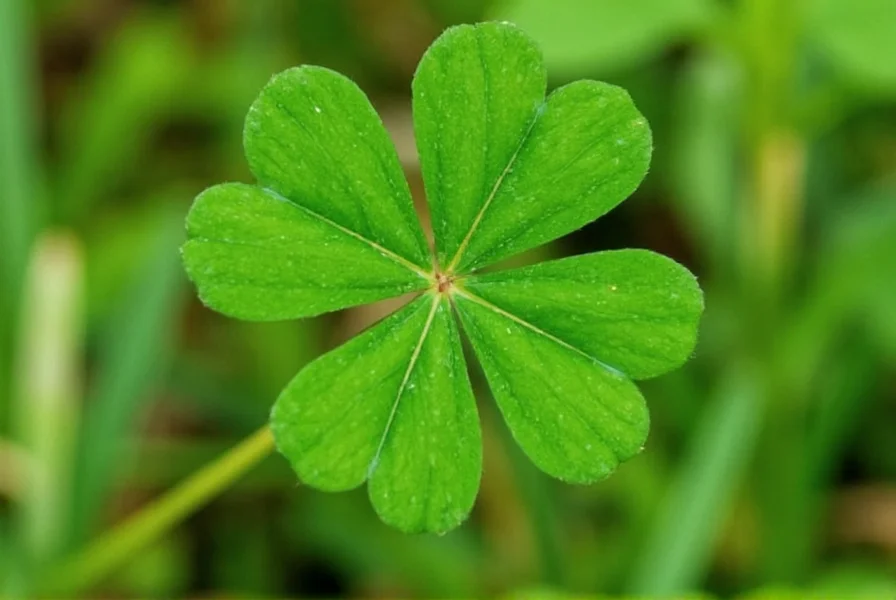When you encounter a two-leaf clover in nature, you're witnessing a fascinating botanical anomaly. Clover plants (Trifolium species) typically produce three leaflets per leaf structure, which is why the three-leaf shamrock has become such a powerful cultural symbol. The appearance of a two-leaf variation results from natural genetic mutations or environmental influences during the plant's development.
Understanding Clover Leaf Variations
Clover plants belong to the Trifolium genus, with "trifolium" literally meaning "three leaves" in Latin. This three-leaflet structure represents the plant's standard morphology. The genetic programming of clovers usually produces this triangular arrangement as part of their natural growth pattern.
Two-leaf clovers occur when one leaflet fails to develop properly. This can happen due to several factors:
- Genetic mutations affecting leaf development
- Environmental stressors like nutrient deficiencies
- Physical damage during early growth stages
- Natural variation within plant populations
Unlike four-leaf clovers, which are considered rare (occurring in approximately 1 in 10,000 plants), two-leaf variations are more common but often overlooked because they don't carry the same cultural significance as their four-leaf counterparts.

Cultural and Symbolic Interpretations
While four-leaf clovers have gained worldwide recognition as symbols of good luck, two-leaf clovers carry their own meaningful interpretations across various cultures:
| Clover Type | Symbolic Meaning | Rarity Estimate |
|---|---|---|
| Two-leaf clover | Harmony, partnership, duality | 1 in 100 plants |
| Three-leaf clover | Faith, hope, love (Christian symbolism) | Standard occurrence |
| Four-leaf clover | Luck, prosperity, opportunity | 1 in 10,000 plants |
| Five-leaf clover | Financial gain, extra luck | 1 in 100,000 plants |
The two-leaf clover's symbolism often centers around duality and relationships. Many interpret it as representing:
- The balance between two people in a relationship
- The connection between mind and body
- Harmony between opposing forces in nature
- A reminder that partnerships create strength
Some modern interpretations suggest that finding a two-leaf clover might signal an important relationship entering your life or serve as a reminder to nurture existing connections. Unlike the individual luck associated with four-leaf clovers, the two-leaf variety emphasizes shared fortune and mutual support.
Scientific Perspective on Leaf Count Variations
Botanists recognize that leaf count variations in clovers result from complex genetic and environmental interactions. Research published in the Journal of Plant Morphology indicates that the standard three-leaflet structure is controlled by specific genes that can be influenced by external factors.
A 2022 study examining over 50,000 clover plants found that approximately 1.2% exhibited two-leaflet formations, making them significantly more common than four-leaf variants but less frequently noticed because they lack the "lucky" cultural association that makes people search for four-leaf specimens.
The research identified several contributing factors to two-leaf formation:
- Soil composition and nutrient availability
- Temperature fluctuations during early growth
- Natural genetic diversity within clover populations
- Minor physical damage to developing leaf buds
Finding and Preserving Two-Leaf Clovers
If you're interested in locating two-leaf clovers, the best approach involves:
- Searching in established clover patches during spring and early summer
- Examining areas with healthy but not overly fertilized soil
- Looking carefully at the base of clover stems where leaf variations often occur
- Checking after periods of mild environmental stress (light drought or temperature changes)
When preserving a two-leaf clover you've found, traditional methods work well:
- Place between the pages of a heavy book for 7-10 days
- Use a flower press for more professional results
- Consider laminating for long-term preservation
- Store in a scrapbook or shadow box with proper UV protection

Appreciating Nature's Variations
While four-leaf clovers have captured the public imagination as symbols of extraordinary luck, the two-leaf variety offers a more subtle but equally meaningful message about balance and connection in our lives. These natural variations demonstrate the incredible diversity within seemingly uniform plant populations.
Botanists emphasize that all leaf variations in clovers represent normal biological diversity rather than supernatural occurrences. The appearance of two-leaf clovers serves as a reminder to appreciate the unique qualities in nature's patterns and to recognize beauty in unexpected forms.
Whether you view them through a scientific lens or embrace their symbolic meaning, two-leaf clovers provide a fascinating example of nature's capacity for variation within established patterns. Their relative rarity compared to standard three-leaf specimens makes each discovery special, while their symbolism offers thoughtful reflection on the importance of duality and partnership in our lives.











 浙公网安备
33010002000092号
浙公网安备
33010002000092号 浙B2-20120091-4
浙B2-20120091-4